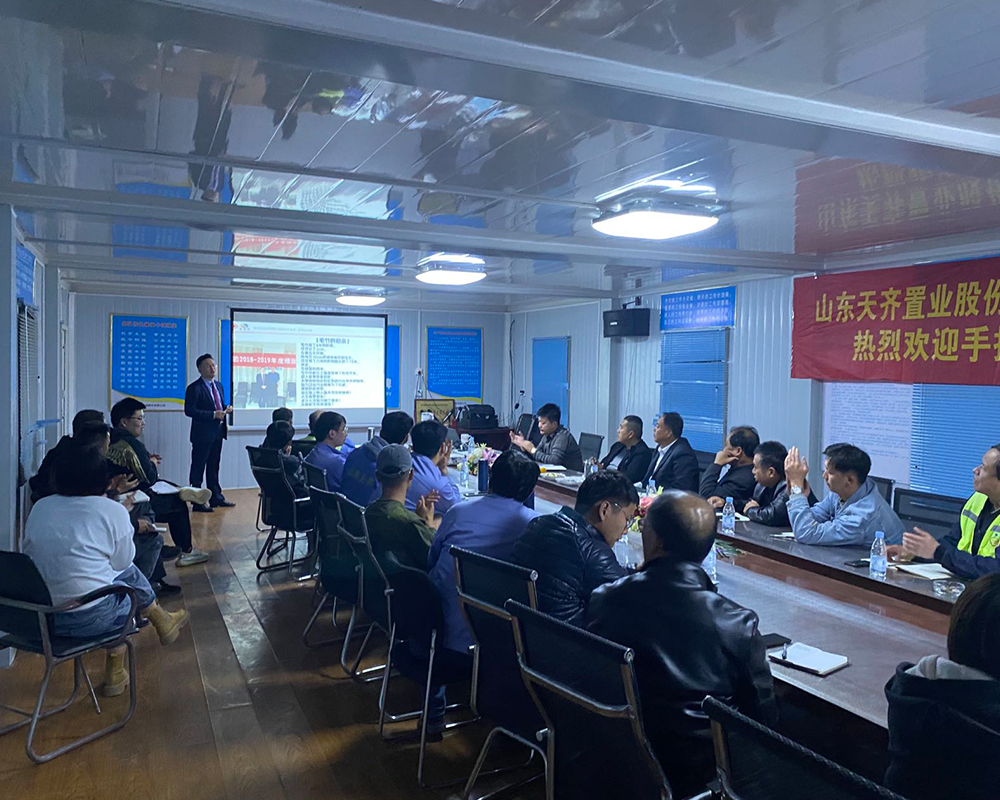
新闻资讯NEWS AND INFORMATION
山东股权激励:股权设计的核心原则与动态调整
发布时间:2025-10-10 来源:http://www.lushangyun.com/
股权设计股权股权设计是公司治理的顶层工程,关乎创业团队控制权、激励机制与风险防控。更是创业公司的“第一份生死状”。
Equity design is the top-level project of corporate governance, which concerns the control of entrepreneurial teams, incentive mechanisms, and risk prevention and control. It is also the 'first life and death statement' of a startup company.
一份科学的股权架构,是凝聚团队、吸引投资、保障创始人航向的基石;而一个看似微小的股权漏洞,则可能在公司壮大后演变成无法弥补的裂痕,导致“兄弟式合伙,仇人式散伙”的悲剧,因股权均分陷入决策僵局,也见过核心技术人员因激励不足而黯然离场;
A scientific equity structure is the cornerstone for uniting the team, attracting investment, and ensuring the founder's direction; And a seemingly small equity loophole may evolve into an irreparable crack after the company grows, leading to the tragedy of "brotherly partnership, enemy style breakup". Due to the equal distribution of equity, it has fallen into a decision-making deadlock, and core technical personnel have also left due to insufficient incentives;
如何避免这些悲剧?本系列文章将为您系统拆解股权设计的核心逻辑,化繁为简,从道到术,为您提供一份完整的实操路线图。“股权设计三部曲”系列将分三期呈现:第一期:奠基 |?股权设计的核心原则与动态调整:
How to avoid these tragedies? This series of articles will systematically break down the core logic of equity design, simplify complexity, and provide you with a complete practical roadmap from Dao to Shu. The "Trilogy of Equity Design" series will be presented in three phases: Phase 1: Foundation | Core Principles and Dynamic Adjustments of Equity Design:
深入剖析“谁创造价值,谁分配利益”的根本原则,并教你如何预见及应对公司发展中的必然变动。
Thoroughly analyze the fundamental principle of 'whoever creates value, who distributes benefits', and teach you how to anticipate and respond to inevitable changes in the company's development.
第二期:精算 | 四大股权类型的科学分配法:
Phase 2: Actuarial Science | Scientific Allocation Method for the Four Major Types of Equity:
告别“拍脑袋”分股,详解出资股、技术股、管理股、预留股如何量化计算与设置。
Say goodbye to the "brainstorming" of stock allocation, and explain in detail how to quantify and set up investment shares, technology shares, management shares, and reserved shares.
第三期:避险 | 必须绕开的五大雷区与控权秘籍:
Episode 3: Risk Avoidance | Five Minefields and Control Tips that Must Be Avoided:
揭秘那些足以让公司陷入僵局的股权陷阱,并学习刘强东、马云如何用少量股权掌握绝对控制权。
Unveil the equity traps that can cause the company to stagnate, and learn how Liu Qiangdong and Jack Ma used a small amount of equity to gain absolute control.
无论您是正准备合伙创业,还是已在途中遭遇股权难题,这个系列都将为您提供至关重要的指引。今天,我们从一切的起点——核心原则开始。
Whether you are preparing to start a partnership or have encountered equity difficulties on the way, this series will provide you with crucial guidance. Today, we start from the starting point of everything - the core principles.
股权设计的三大核心原则
The Three Core Principles of Equity Design
原则一:谁创造价值,谁分配利益
Principle 1: Whoever creates value distributes benefits
传统纯按出资额分配股权的方式,在知识经济时代弊端显著—仅认可 “一次性资金投入”,忽视合伙人后续人力、技术贡献,易致 “早期出资者躺赚,后期贡献者吃亏”。典型案例:
The traditional method of distributing equity solely based on the amount of capital contribution has significant drawbacks in the knowledge economy era - it only recognizes "one-time capital investment" and ignores the subsequent human and technological contributions of partners, which can easily lead to "early investors making profits while later contributors suffer losses". Typical case:
A(出资50万)、B(出资30万)、C(出资20万)按 5:3:2 占股成立科技公司。一年后,负责核心技术的B离职拒退股权,仍每年获30% 分红(约50万元),而坚守的 A、C 承担经营压力仅分70%收益,最终团队矛盾爆发,核心技术团队流失。
A (with a capital contribution of 500000), B (with a capital contribution of 300000), and C (with a capital contribution of 200000) will establish a technology company with a 5:3:2 shareholding ratio. One year later, B, who was responsible for the core technology, resigned and refused to withdraw his equity. He still received an annual dividend of 30% (about 500000 yuan), while A and C, who remained steadfast, only shared 70% of the profits due to operational pressure. Eventually, team conflicts erupted and the core technology team was lost.
解决方案:
Solution:
实行“资金 + 人力”双重价值定价。资金贡献占比控制在 30%-70%(重资产行业如制造业60%-70%,轻资产行业如互联网30%-40%),剩余为“人力激励池”,绑定核心成员。关键工具是限制性股权与分期成熟机制,适配不同团队:4年匀速成熟:通用模式,每年兑现25%,适用于稳定发展、无明确里程碑的团队。逐年递增成熟:如“10%、20%、30%、40%”阶梯式,适用于前期需快速搭建框架、后期需深度打磨的项目(如硬件研发公司)。里程碑式成熟:以关键目标为节点(如“全职2年兑现 50%,用户破10万兑现30%,首轮融资兑现20%”),适用于目标清晰的ToC类项目。5年成熟期(国外常见):入职1年兑现20%(“cliffs period”),剩余80%按月兑现(每月约0.67%),适用于对人才稳定性要求高的领域(如生物医药研发)核心作用:合伙人中途退出,公司可按协议回购未成熟股权(原始出资价或账面净资产价);已成熟部分可约定“锁定期 + 回购折扣”(如离职6个月内禁转,回购价为最新估值8 折),防“搭便车”,促“贡献与收益匹配”。
Implement a dual value pricing system of "capital+manpower". The proportion of capital contribution is controlled at 30% -70% (heavy asset industries, such as manufacturing, 60% -70%, light asset industries, such as the Internet, 30% -40%), and the rest is the "human incentive pool", bound to core members. The key tools are restricted equity and phased maturity mechanisms, suitable for different teams: 4-year uniform maturity; universal mode, with an annual cash out of 25%, suitable for stable development and teams without clear milestones. Gradual maturity year by year: such as "10%, 20%, 30%, 40%" ladder style, suitable for projects that require rapid framework construction in the early stage and deep polishing in the later stage (such as hardware research and development companies). Milestone maturity: Using key goals as nodes (such as "50% cash out for 2 years full-time, 30% cash out for users exceeding 100000, and 20% cash out for first round financing"), suitable for ToC projects with clear goals. 5-year maturity period (commonly seen abroad): 20% will be cashed out within 1 year of employment ("clips period"), and the remaining 80% will be cashed out monthly (approximately 0.67% per month), suitable for fields that require high talent stability (such as biopharmaceutical research and development). Core role: If a partner withdraws midway, the company can repurchase immature equity according to the agreement (original capital price or book net asset price); Mature parts can be agreed upon with a "lock up period+repurchase discount" (such as being prohibited from transferring within 6 months of resignation, with a repurchase price of 20% off the latest valuation) to prevent "free riding" and promote "matching of contributions and returns".
原则二:综合考量所有投入要素的价值
Principle 2: Comprehensive consideration of the value of all input factors
创业初期,合伙人贡献呈“多元化、非货币化”,除现金外,技术专利、办公场地、渠道资源等均可能关键。股权分配需建“量化评估体系”,将各类投入折算“市场价值”,避免争议。
In the early stages of entrepreneurship, the contributions of partners are diversified and non monetized. In addition to cash, technology patents, office space, channel resources, etc. may all be crucial. The equity distribution needs to establish a "quantitative evaluation system" to convert various inputs into "market value" and avoid disputes. ?
可借鉴硅谷“动态股权分配”理念,按“个人贡献估值 ÷ 全体总贡献估值 ×100%”算股权,五大要素估值遵循 “实际需求、市场对标、公平折算”原则:
We can learn from the concept of "dynamic equity distribution" in Silicon Valley and calculate equity based on "individual contribution valuation ÷ total contribution valuation x 100%". The valuation of the five major elements follows the principles of "actual demand, market benchmarking, and fair conversion":
1.工作时间:按市场薪资折算“人力投资”。若已付市场价工资,不计额外贡献;若降薪,月薪差额计入 “隐性投资”(如某合伙人全职 1 年,月薪差额2万,累计贡献24 万)。
1. Working hours: Converted based on market salary as "human resources investment". If the market price salary has been paid, no additional contribution will be made; If the salary is reduced, the difference in monthly salary will be included in the "implicit investment" (such as a partner who has been full-time for 1 year, with a monthly salary difference of 20000 yuan and a cumulative contribution of 240000 yuan).
2.现金与实物:现金按实际出资额估值(早期风险资金可1.2-1.5倍溢价);实物需 “公司必需、专属使用”,按二手公允价值折算(闲置资产不计)。
2. Cash and physical assets: Cash is valued based on actual capital contributions (early-stage venture capital may have a premium of 1.2-1.5 times); The physical object needs to be "necessary and exclusively used by the company" and converted at second-hand fair value (excluding idle assets).
3.办公场地:按“实际节省租金”折算(如市场价1.5万/月,仅收 5000元/月,每月1万差额计入,使用2年累计24万),需签正式租赁协议。4.专用技术或知识产权:专利、算法等可作价入股(如生物医药发明专利按50 万- 200万折算,互联网核心算法按研发成本1.5 倍折算);仅 “授权使用” 则按年度许可费累计。
3. Office space: Calculated based on "actual rent savings" (such as a market price of 15000 yuan/month, only 5000 yuan/month, with a monthly difference of 10000 yuan included, and a cumulative usage of 240000 yuan over 2 years), a formal lease agreement needs to be signed. 4. Special technology or intellectual property rights: patents, algorithms, etc. can be priced into shares (for example, biological medicine invention patents are converted into 500000-2 million yuan, and Internet core algorithms are converted into 1.5 times of R&D costs); If only authorized for use, the annual license fee will be accumulated.
5.人脉资源:仅“有效资源”(直接转化收益)可估值(如介绍100 万订单,按5%提成折算5万;协助1000万融资,按2%佣金折算20 万),“仅介绍认识”不计。
5. Network resources: Only "effective resources" (direct conversion income) can be valued (such as introducing 1 million orders, converting 50000 according to a 5% commission; assisting 10 million financing, converting 200000 according to a 2% commission), and "only introducing acquaintances" is not counted.
核心提醒:投入要素需 “公司实际需要”,避免强行计入个人闲置资源,破坏公平。
Core reminder: The input factors should be based on the actual needs of the company, to avoid forcibly including idle personal resources and undermining fairness.
原则三:承认投入要素价值的动态浮动
Principle 3: Recognize the dynamic fluctuation of input factor value
公司不同阶段对资源需求权重不同:初创期(0-1 年)资金、场地价值占60%;成长期(1-3 年)技术、渠道占50%;成熟期(3 年以上)管理、品牌占40%。股权结构需动态调整,不可“一劳永逸”。
The weight of resource requirements varies in different stages of the company: during the start-up period (0-1 year), capital and site value account for 60%; During the growth period (1-3 years), technology and channels account for 50%; Mature stage (more than 3 years) management and branding account for 40%. The equity structure needs to be dynamically adjusted and cannot be 'once and for all'.
两种实操方法:
Two practical methods:
1.预估法(适用于小团队、目标清晰项目):
1. Estimation method (applicable to small teams and projects with clear goals):
初期预估1-2年投入总价值,定初始股权,后续用“预留股”或“定向增发”调整。
The initial estimate is the total investment value for 1-2 years, and the initial equity will be determined. Subsequently, adjustments will be made using "reserved shares" or "targeted issuance".
例:A(人力估值42万)、B(人力18万)、C(现金20万,早期资金翻倍估值40万),总估值100万,初始股权A:42%、B:18%、C:40%;1年后技术重要性提升,从预留股划5%给B,调整为A:42%、B:23%、C:40%(预留股5%)。
Example: A (human resources valuation of 420000), B (human resources of 180000), C (cash of 200000, early capital doubled valuation of 400000), total valuation of 1 million, initial equity A: 42%, B: 18%, C: 40%; After one year, the importance of technology will increase, and 5% of the reserved shares will be allocated to B, adjusted to A: 42%, B: 23%, C: 40% (reserved shares of 5%).
2.定期评估法(适用于复杂团队、长期项目):
2. Regular evaluation method (applicable to complex teams and long-term projects):
按月/季度开“贡献评估会”,汇总投入价值,更新股权。
Hold monthly/quarterly 'contribution evaluation meetings' to summarize investment value and update equity.
流程:
technological process:
①月末统计现金、时间差额、资源收益;
① Monthly statistics of cash, time difference, and resource income;
②按市场标准折算当月贡献;
② Convert the monthly contribution according to market standards;
③累计总贡献,重算股权;
③ Accumulated total contribution, recalculate equity;
④书面记录签字确认)。
④ Written record signature confirmation).
例:电商公司1月A贡献8万、B5万、C7万,股权A:40%、B:25%、C:35%;2月A10万、B6万、C4万,累计总贡献40万,股权调整为A:45%、B:27.5%、C:27.5%。随总贡献增大,单次投入对股权影响渐小,结构趋稳。
Example: E-commerce company A contributed 80000, B5 million, and C7 million in January, with equity A: 40%, B: 25%, C: 35%; In February, there were 100000, B6, and C4 million contributions, with a total cumulative contribution of 400000. The equity was adjusted to A: 45%, B: 27.5%, and C: 27.5%. As the total contribution increases, the impact of a single investment on equity gradually decreases, and the structure tends to stabilize.
关键节点:外部融资前3个月需完成最终稳定——定成熟比例、清理未成熟股权、明确预留归属,避免影响融资。
Key milestones: Final stabilization must be completed within 3 months before external financing - setting mature ratios, clearing immature equity, clarifying reserved ownership, and avoiding any impact on financing.
必须预见的四大
The four major things that must be foreseen
变动因素及应对
Change factors and countermeasures
变动一:
Change 1:
因经营需要增资
Increase capital due to business needs
增资扩股会稀释原有股份,须明确稀释规则与优先认缴,防控制旁落。?稀释后核心公式:
Capital increase and share expansion will dilute existing shares, and the dilution rules and priority subscription must be clearly defined to prevent control from falling behind. Diluted core formula:
合伙人稀释后股权比例 = (合伙人原股权比例×原注册资本+合伙人本次新增出资额)÷新注册资本总额典型案例:A、B、C各出资100万成立公司,注册资本300万,股权各33.33%。增资至1000万,C放弃增资,A、B各新增350?万。
Diluted equity ratio of partners=(original equity ratio of partners x original registered capital+newly added capital of partners) ÷ total newly registered capital. Typical cases: A, B, and C each contribute 1 million yuan to establish a company with a registered capital of 3 million yuan and 33.33% equity each. Increase capital to 10 million, C gives up capital increase, A and B each add 3.5 million.
则?A、B新增后各450万,C100万,新注册资本1000万,稀释后?A:45%、B:45%、C:10%。法律实操要点:??优先认缴权:《公司法》第34条规定,股东有权优先按实缴比例认缴出资。排除该权利(如引外部投资人),需经代表三分之二以上表决权股东通过,签书面协议(明确放弃范围、期限)。??增资价格:内部增资按“账面净资产价”(未盈利公司)或“5-10?倍净利润市盈率”(盈利公司);
After the addition of A and B, each with 4.5 million and 10 million respectively, the newly registered capital is 10 million. After dilution, A: 45%, B: 45%, C: 10%. Key points of legal practice: ? Priority subscription right: Article 34 of the Company Law stipulates that shareholders have the right to subscribe capital in proportion to their actual contributions. Excluding this right (such as inviting external investors) requires the approval of more than two-thirds of the voting shareholders and the signing of a written agreement (specifying the scope and deadline for waiver). ? Capital increase price: Internal capital increase is based on the "book net asset price" (for unprofitable companies) or the "5-10 times net profit P/E ratio" (for profitable companies);
外部增资按市场估值,需向原股东披露依据(财务报表、行业数据),防“暗箱操作”。
External capital increase shall be based on market valuation, and the basis (financial statements, industry data) shall be disclosed to the original shareholders to prevent "black box operations".
变动二:
Change 2:
合伙人贡献相对变动
Relative changes in partner contributions
公司发展中,合伙人贡献可能?“核心变边缘”?或?“边缘变核心”,需?“股权调整” 再匹配,防 “贡献下滑者占股过高”?拖累团队。典型案例1(贡献提升):
In the development of the company, the contributions of partners may change from "core to edge" or "edge to core", and it is necessary to "adjust equity" and then match them to prevent the team from being dragged down by "high shareholding of those with declining contributions". Typical Case 1 (Contribution Enhancement):
A(出60 万,占60%)、B(出40万,占股 40%)成立营销公司,初期以资金为核心。1 年后,B靠独家渠道带80% 营收(500 万),A 仅管日常(贡献 20%)。
A (investing 600000 yuan, accounting for 60%) and B (investing 400000 yuan, accounting for 40% of the shares) established a marketing company, with funding as the core in the initial stage. One year later, B will generate 80% of its revenue (5 million) through exclusive channels, while A will only manage daily operations (contributing 20%).
经协商,A稀释10%给?B,调整后A:54%、B:46%,约定B需持续维护渠道,贡献下滑则回调。典型案例?2(贡献下滑):
After negotiation, A will dilute 10% to B, and after adjustment, A will be 54% and B will be 46%. It is agreed that B will continue to maintain the channel, and if the contribution decreases, it will be adjusted back. Typical Case 2 (Decreased Contribution):
科技公司早期,技术合伙人C凭核心算法占股?30%。3年后业务转市场,技术迭代放缓,C贡献降至?10%且拒参与新业务。
In the early days of technology companies, technology partner C held a 30% stake with core algorithms. Three years later, the business will shift to the market, technological iteration will slow down, C's contribution will decrease to 10%, and they will refuse to participate in new businesses.
全体股东协商?“股权回购?+?现金补偿”:按公司估值1000万的8?折,以80万回购C15%股权(剩余15%),另付20万历史贡献补偿,平衡利益。调整原则:??自愿协商优先,需书面同意,不强制稀释转让。??单次变动不超 5%,大幅调整(10% 以上)分2-3次,配套 “业绩承诺”(如6个月达目标,否则回调)。
All shareholders shall negotiate "equity repurchase+cash compensation": at a discount of 80% of the company's valuation of 10 million yuan, repurchase C15% equity (remaining 15%) with 800000 yuan, and pay an additional 200000 yuan historical contribution compensation to balance interests. Adjustment principle: Voluntary negotiation takes priority, written consent is required, and there is no mandatory dilution transfer. A single change should not exceed 5%, and significant adjustments (over 10%) should be made 2-3 times, accompanied by a "performance commitment" (such as achieving the target within 6 months, otherwise it will be adjusted back).
变动三:新合伙人加入
Change 3: New Partner Joined
新合伙人(核心技术、资源型)加入需重估公司价值,设计入股方案,保原股东权益,防?“低成本占股”。两种核心加入方式:1.?受让原股权(注册资本不变):??流程:新合伙人从原股东购股权,签《股权转让协议》,定价格、支付方式、工商变更时间。??定价:未融资按?“累计贡献估值”;已融资按?“最近轮估值?8-9?折”(老股流动性折扣),如公司估值?1000?万,受让?10%?股权需?80-90?万。??注意:需全体股东书面同意(章程有约定除外),办工商变更,防?“隐名股东”?纠纷。1.?增资入股(注册资本增加):??流程:新合伙人注资增注册资本,签《增资协议》,明确股权比例、资金用途、业绩对赌(可选)。??估值:用?“可比公司法”(参考同行市盈率)或?“折现现金流法”(稳定现金流公司),如教育公司年净利润?200?万,行业市盈率?15?倍,估值?3000?万,出资?300?万占股?9.09%(300÷(3000+300))。??义务:原股东需披露公司财务、负债、核心资产权属,防?“信息不对称”?致协议撤销。
The addition of new partners (core technology, resource-based) requires a reassessment of the company's value, the design of a shareholding plan, the protection of the original shareholders' equity, and the prevention of "low-cost shareholding". Two core joining methods: 1. Acquiring original equity (with unchanged registered capital): ? Process: The new partner purchases equity from the original shareholder, signs the "Equity Transfer Agreement", sets the price, payment method, and industrial and commercial change time. Pricing: Unfunded assets are valued based on "cumulative contribution valuation"; Already financed at a discount of 8-9% based on the latest round valuation (old stock liquidity discount). If the company is valued at 10 million, acquiring 10% equity requires 800000 to 900000. Attention: Written consent from all shareholders is required (except as stipulated in the articles of association) to handle business changes and prevent disputes involving "anonymous shareholders". 1. Capital increase and shareholding (increase in registered capital): ? Process: The new partner injects capital to increase the registered capital, signs the "Capital Increase Agreement", and specifies the equity ratio, fund use, and performance betting (optional). Valuation: Using the "comparable company method" (referring to peer price to earnings ratio) or "discounted cash flow method" (stable cash flow company), such as an education company with an annual net profit of 2 million yuan, an industry price to earnings ratio of 15 times, a valuation of 30 million yuan, and a capital contribution of 3 million yuan holding 9.09% of the shares (300 ÷ (3000+300)). Obligation: The original shareholders are required to disclose the company's finances, liabilities, and ownership of core assets to prevent agreement revocation due to "information asymmetry".
变动四:合伙人中途退出
Change 4: Partner withdraws midway
此为纠纷“重灾区”,未约定退出规则,退出者可能?“带股权分红”?或?“漫天要价”,影响公司运营。风险案例:互联网公司合伙人?D?占股?20%,入职?6?个月离职拒退股权,要求每年?100?万分红。因无退出条款,公司花?500?万回购,致现金流断裂,错失迭代时机。解决方案:结构化退出机制,核心是“股权分拆?+?回购定价?+?违约追责”:1.?股权分拆:划分为“资金股”(30%-50%,对应现金出资,一次性成熟)和?“人力股”(50%-70%,对应持续贡献,分期成熟)。例:总股权?20%,资金股?8%、人力股?12%(4?年成熟,每年?3%)。2.?回购规则:??主动离职(非不可抗力):未成熟人力股按原始价回购;已成熟人力股按“账面净资产价或最近融资估值5-7?折”回购;资金股按?“原始价?1.2-1.5?倍”?回购。??被动离职(辞退、健康原因):未成熟人力股按原始价回购;
This is a "high-risk area" for disputes, and no exit rules have been agreed upon. Exiters may receive "equity dividends" or "sky high demands", which could affect the company's operations. Risk case: partner D of the Internet company holds 20% of the shares. After six months of employment, he leaves the company and refuses to withdraw his equity, requiring 1 million dividends every year. Due to the absence of an exit clause, the company spent 5 million yuan to repurchase, resulting in a cash flow interruption and missing the opportunity for iteration. Solution: Structured exit mechanism, with the core of "equity split+repurchase pricing+default accountability": 1. Equity split: divided into "capital shares" (30% -50%, corresponding to cash contributions, one-time maturity) and "human resources shares" (50% -70%, corresponding to continuous contributions, phased maturity). Example: Total equity of 20%, capital stock of 8%, and human resources stock of 12% (mature for 4 years, 3% per year). 2. Repurchase rules: ? Voluntary resignation (excluding force majeure): Immature human resources stocks are repurchased at the original price; Mature human resources stocks will be repurchased at a discount of 50-70% of their book value or recent financing valuation; Fund stocks will be repurchased at 1.2-1.5 times the original price. Passive resignation (termination, health reasons): Immature human resources stocks are repurchased at the original price;
已成熟人力股按“最近融资估值?8-9?折”?回购;资金股按?“原始价1.5-2?倍”?回购。??违约退出(泄密、同业竞争):所有股权按原始价回购,付股权估值?20%-30%?违约金,追究法律责任。实操细节:退出时签《股权回购协议》,明确回购款支付(如6个月内付清)、工商变更(15个工作日内)、保密义务。
Mature human resources stocks will be repurchased at a discount of 8-9% based on their recent financing valuation; Fund stocks will be repurchased at 1.5-2 times the original price. ? Default exit (leakage, industry competition): All equity will be repurchased at the original price, with a penalty of 20% -30% of the equity valuation, and legal responsibility will be pursued. Practical details: Sign the "Equity Repurchase Agreement" upon exit, specifying the payment of the repurchase amount (if paid in full within 6 months), business changes (within 15 working days), and confidentiality obligations.
结语股权设计是 “动态平衡艺术”,以 “谁创造价值谁分配” 为核心,“量化投入” 为基础,“应对风险” 为保障。国内成功企业如华为(虚拟受限股)、阿里(合伙人制度)、字节跳动(动态调整),核心逻辑均为 “公平与动态”。
Conclusion: Equity design is a "dynamic balancing art", with "whoever creates value distributes it" as the core, "quantitative investment" as the basis, and "risk response" as the guarantee. Successful domestic enterprises, such as Huawei (virtual restricted stock), Ali (partnership system), and ByteDance (dynamic adjustment), all have a core logic of "fairness and dynamics".
创业者需 “提前约定、书面固化、定期复盘”:成立初期明确三大原则,预埋变动应对策略,写入章程或股东协议;每季度复盘股权,调整权重;融资前、核心人员变动前审视结构,确保 “贡献与收益匹配、控制权稳定、风险可控”,为公司长远发展筑牢基石。
Entrepreneurs need to "agree in advance, solidify in writing, and conduct regular reviews": clarify the three major principles in the early stages of establishment, embed change response strategies, and write them into the articles of association or shareholder agreement; Quarterly review of equity and adjustment of weights; Before financing and changes in core personnel, review the structure to ensure that contributions match returns, control is stable, and risks are controllable, laying a solid foundation for the company's long-term development.
本文由 山东股权激励 友情奉献.更多有关的知识请点击 http://www.lushangyun.com/ 真诚的态度.为您提供为全面的服务.更多有关的知识我们将会陆续向大家奉献.敬请期待.
This article is about Shandong Equity Incentive Friendship Dedication For more related knowledge, please click http://www.lushangyun.com/ Sincere attitude To provide you with comprehensive services We will gradually contribute more relevant knowledge to everyone Coming soon.
本站声明
本网站为非营利性网站,旨在宣扬股权知识,交流职业学习心得。网站内部分文章来自其它网站,只做交流学习之用。相应的权力均属于原权 力人,如权利人认为不妥,请来电来函说明,本网站随既停止或使用,谢谢合作! 13698613138
13698613138
微信公众号

扫码获知更多知识

抖音二维码

截屏,微信识别二维码